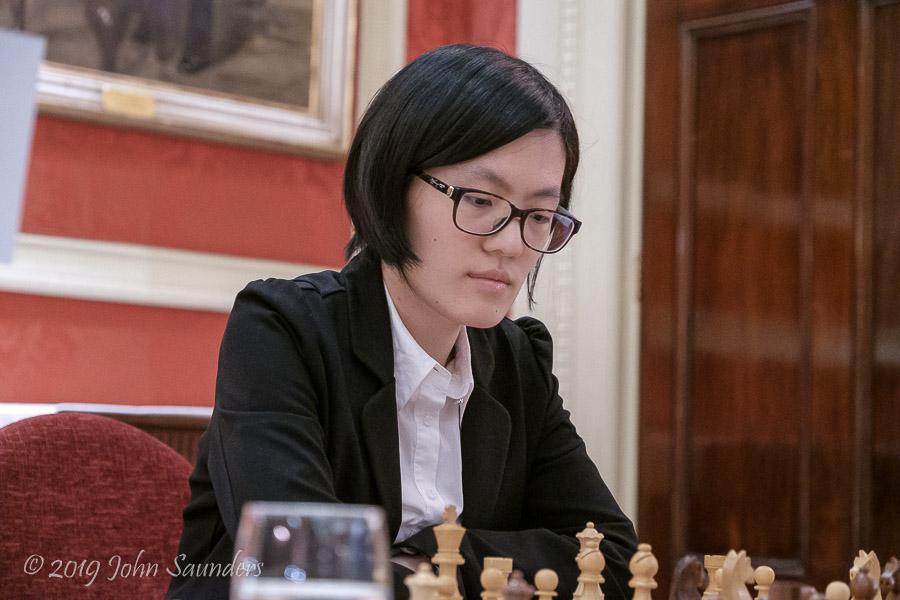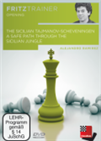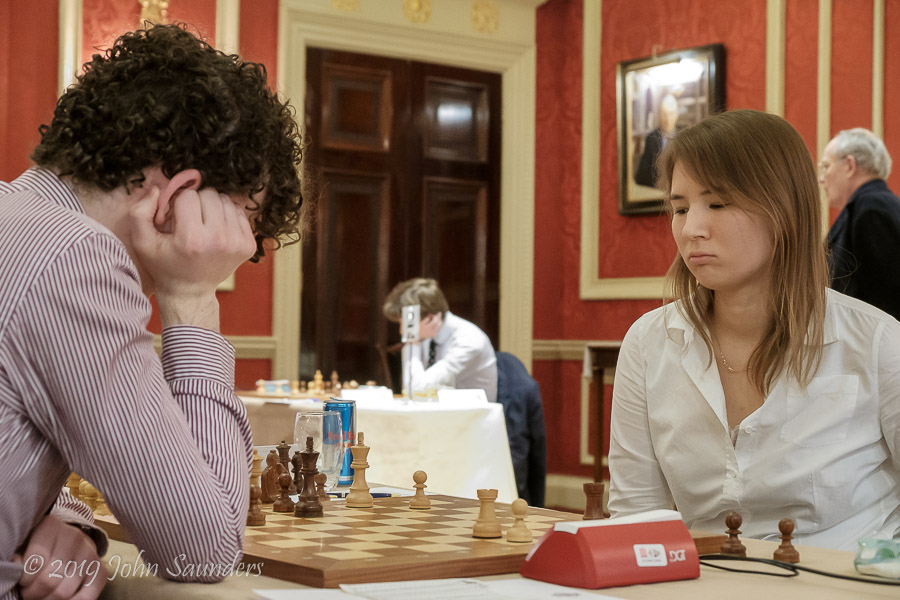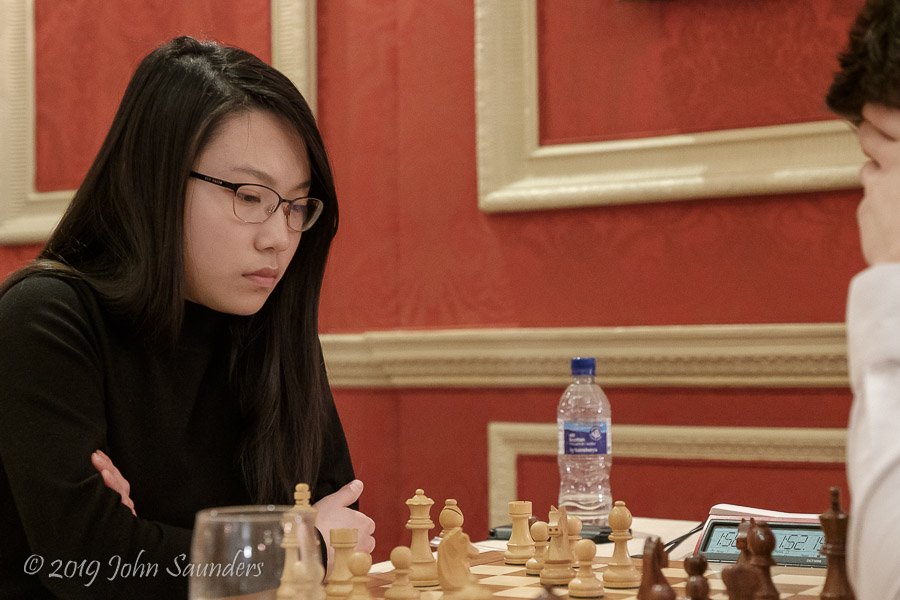Hou's on first board
It's a rivalry dating back to 1873 and, last Saturday, Oxford and Cambridge Universities squared off once more for the 137th "Varsity Match" at the Royal Automobile Club in central London. Oxford won this year's bout by a narrow margin of 4½ to 3½, despite being heavy rating favourites across the eight-board match.
The two teams have been competing — interrupted only by world wars — in a variety of sports, since the 19th century, and is cited as "one of the great traditions of British Chess".
Women only began to compete in the late 1970s, but back then the match was played on seven boards, with an eighth "Ladies board" not counted for the match scoring, except as a tiebreaker.
Since 1992, it has been an eight-board match and top female players like IM Harriet Hunt and WIM Ruth Sheldon competed on the top board. Neither, however, were World Champion calibre, so Hou Yifan's appearance is a first. Although she has not played much over the past year, it's still a small upset that Cambridge's 2396-rated FM Matthew Wadsworth was able to hold Hou to a draw with the black pieces.

Hou is a Rhodes Scholar at Oxford | Photo: John Saunders
GM Daniel Fernandez, who was on the losing Cambridge side when the teams faced off in 2017, takes a look at all the games, starting with the world number one woman.
 The Sicilian has been known for decades as the most reliable way for Black to obtain an unbalanced but good position. Among the most popular Sicilians at the top level the two that certainly stand out are the Najdorf and the Paulsen.
The Sicilian has been known for decades as the most reliable way for Black to obtain an unbalanced but good position. Among the most popular Sicilians at the top level the two that certainly stand out are the Najdorf and the Paulsen.
The Cambridge squad: Peter Finn, Naomi Wei, Ryan Rhys Griffiths, Gustavo Leon Cazares, Gwilym Price, James Cole (captain), James Walsh (reserve), Conor Murphy, Matthew Wadsworth | Photo: John Saunders
Click or tap a game in the list to switch
 How many times have you been caught off guard by a seemingly inferior and unusual opening system that later turns out to be an especially strong one? Unorthodox openings can be a real asset to anyone’s opening repertoire and they often do not contain much theory, making them easy to master for your next important tournament.
How many times have you been caught off guard by a seemingly inferior and unusual opening system that later turns out to be an especially strong one? Unorthodox openings can be a real asset to anyone’s opening repertoire and they often do not contain much theory, making them easy to master for your next important tournament.
Two other women competed: WIM Lisa Schut was on board 3 for Oxford | Photo: John Saunders
 Learn to master the right exchange! Let the German WGM Elisabeth Pähtz show you how to gain a strategic winning position by exchanging pieces of equal value or to safely convert material advantage into a win.
Learn to master the right exchange! Let the German WGM Elisabeth Pähtz show you how to gain a strategic winning position by exchanging pieces of equal value or to safely convert material advantage into a win.

Naomi Wei was badly out-rated on board 8 for Cambridge | Photo: John Saunders
 Rules of thumb are the key to everything when you are having to set the correct course in a complex endgame. In this final DVD of his series on the endgame, our endgame specialist introduces you to the most important of these rules of thumb.
Rules of thumb are the key to everything when you are having to set the correct course in a complex endgame. In this final DVD of his series on the endgame, our endgame specialist introduces you to the most important of these rules of thumb.
Full results
| Bd |
Oxford University |
Rating |
Fed. |
4½:3½ |
Cambridge University |
Rating |
Fed. |
| 1w |
GM Hou Yifan |
2662 |
CHN |
½-½ |
FM Matthew Wadsworth |
2386 |
ENG |
| 2b |
FM Isaac Sanders |
2355f |
ENG |
1-0 |
FM Ryan Rhys Griffiths |
2359 |
IRL |
| 3w |
WIM Lisa Schut |
2259 |
NED |
½-½ |
FM Conor Murphy |
2361 |
IRL |
| 4b |
Joris Gerlagh |
2258 |
NED |
0-1 |
Gwilym Price (Clare) |
2138 |
ENG |
| 5w |
CM Benjamin Foo Zhi Rong |
2254 |
SGP |
0-1 |
Gustavo Leon Cazares |
2059 |
MEX |
| 6b |
FM Daniel Abbas |
2253 |
ENG |
1-0 |
Peter Finn |
1863 |
ENG |
| 7w |
Gordon Scott |
2237 |
ENG |
½-½ |
James Cole |
1921 |
ENG |
| 8b |
Filip Mihov |
2155 |
MKD |
1-0 |
Naomi Wei |
1787 |
ENG |
| |
Av. Rating = 2304.1 |
|
|
4½-3½ |
Av. Rating = 2109.2 |
|
|
Links



























